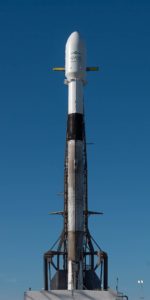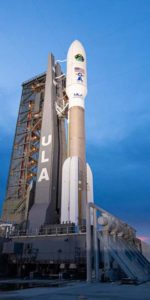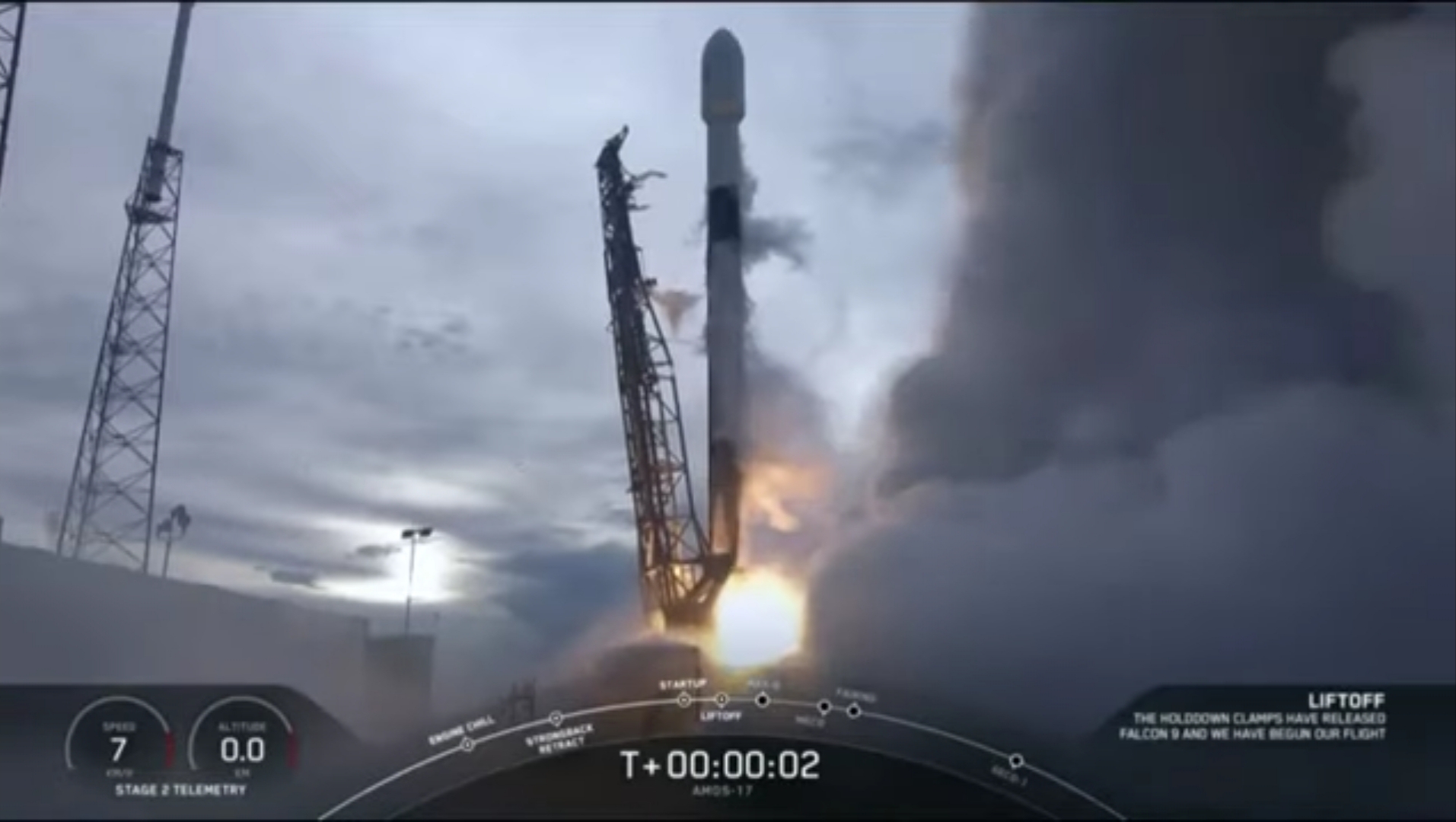
Shortly before sunset Tuesday, 6 August, a fond farewell was paid to one of few rockets in history to have flown as many as three times. SpaceX’s B1047 first-stage core—the lowermost component of the Falcon 9 rocket—rose from Space Launch Complex (SLC)-40 at Cape Canaveral Air Force Station, Fla., at 7:23 p.m. EDT to deliver its third and final primary payload to space.
Blackened, scarred and scorched from its previous high-stress launches and high-energy re-entries, B1047 is the fourth SpaceX bird to rocket away from Earth on three occasions. But it is alone among them in having sent all of its payloads to geostationary altitude, more than 22,300 miles (35,900 km) above the Home Planet. And tonight, it performed its swansong with perfection.
As outlined in AmericaSpace’s preview feature, this mission has been waiting in the wings for some time and marked unfinished business both for SpaceX and for the payload’s provider, Israeli operator Spacecom, Ltd. Aboard the rocket was the heavyweight Amos-17 communications satellite, built by Boeing, which is destined for an orbital slot at 17 degrees East longitude, from where it will bring to bear the most advanced communications payload ever deployed over Africa.
With Ku-, Ka- and C-band capability, the giant satellite—which tips the scales at around 13,000 pounds (5,900 kg) and will span the length of three school buses when its twin solar arrays wings are fully unfurled—is intended to provide high-throughput communications and broadcasting services in support of growing markets across Africa, the Middle East and Europe.
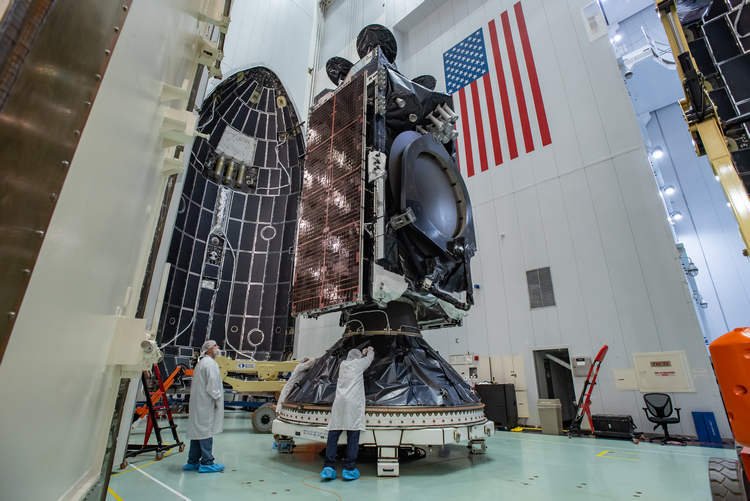
Based upon the tried-and-true 702MP “bus”, whose modularity affords a reduced development time, Amos-17 has risen from a contract agreement between Boeing and Spacecom back in December 2016, through Critical Design Review (CDR) within a year to the arrival of the complete satellite in Florida for testing in early 2019.
Last month, Amos-17 was encapsulated within its bullet-like payload fairing and on 29 July the Upgraded Falcon 9—its used-before blackened core visually juxtaposed against the pristine white of a brand-new second stage—was trundled out of the Horizontal Integration Facility (HIF) to the SLC-40 pad surface for its customary Static Fire Test on the 31st. An additional fire was later conducted overnight on 3/4 August, following the need to replace a suspect valve.
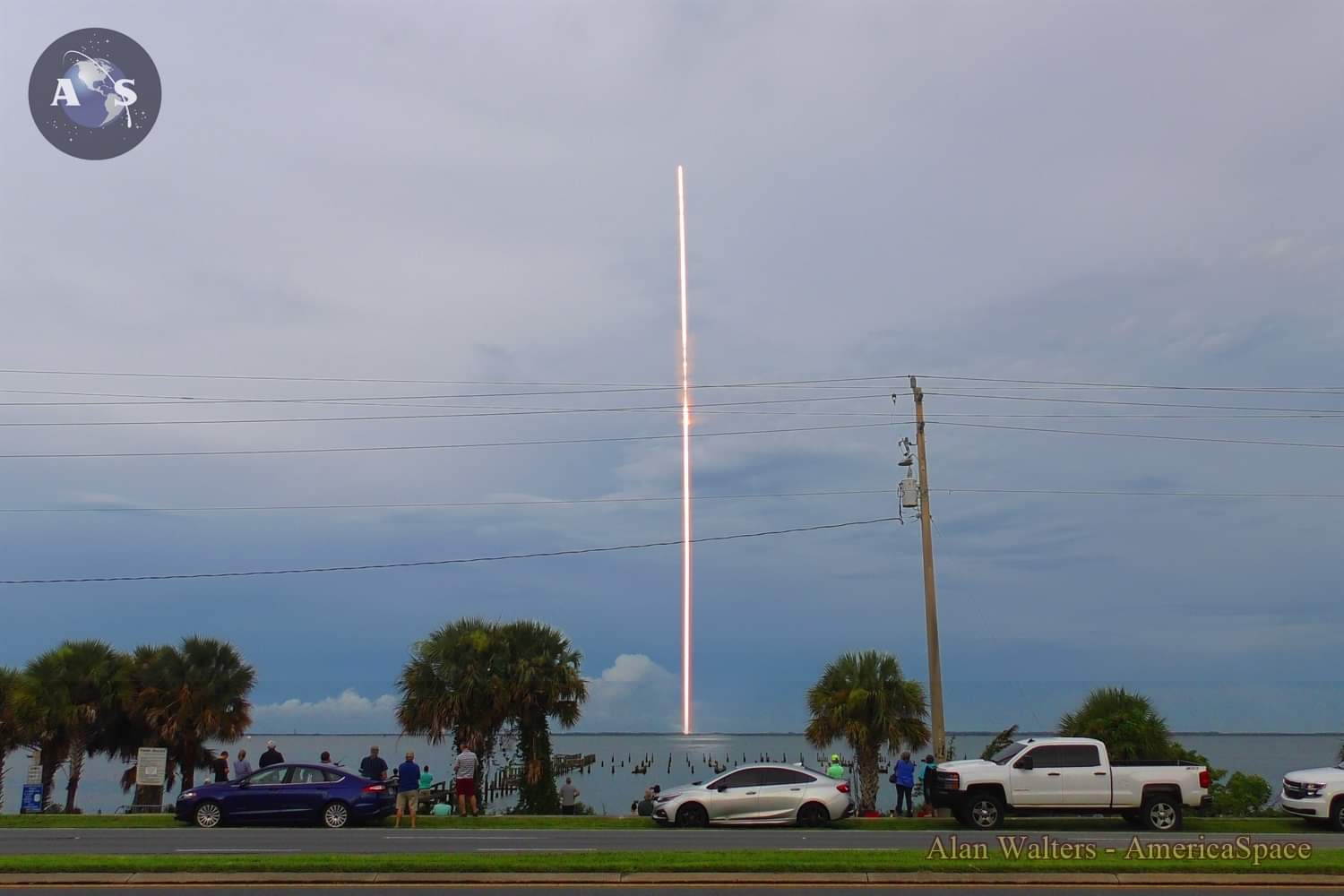
When it reaches orbit, Amos-17 will replace the Amos-5 satellite, which suffered multiple electrical power system failures following its December 2011 launch and was declared officially lost in December 2015. But dovetailed into the Amos-17 story is the much-publicized failure of Amos-6, which was only days away from launch in September 2016 when its Upgraded Falcon 9 exploded on SLC-40 during a pre-flight test. The rocket and payload were both lost in the resultant inferno, which SpaceX later blamed on a buckled Composite Overwrapped Pressure Vessel (COPV). By the end of the following year, Spacecom revealed its intent to use full credits from the failed Amos-6 mission to cover the launch fees for Amos-17.
Weather conditions for Tuesday’s opening launch attempt were predicted to be only 30-percent-favorable, improving marginally to 40-percent acceptable in the event of a 24-hour scrub to Tuesday. Disturbed weather and lightning did move through the Cape throughout the afternoon, and delayed SpaceX’s target time to 7:23pm local, but obviously cleared enough to support a launch.
Loading of the sooty-looking Upgraded Falcon 9 first stage with liquid oxygen and a highly refined form of rocket-grade kerosene (known as “RP-1”) got underway at T-35 minutes. This was followed by the onset of second-stage cryogenic tanking at T-16 minutes. Liftoff occurred at 7:23pm EDT, kicking off SpaceX’s tenth mission of 2019.
The trusty B1047 core burned to perfection, before being jettisoned and—intentionally denuded of landing legs for its final flight—was disposed of in the ocean. Meanwhile, the single Merlin 1D+ Vacuum engine of the second stage picked up the baton to deliver Amos-17 smoothly to orbit. The satellite will utilize its on-board electric and chemical propulsion systems over the next two weeks to inject itself into its orbital slot at 17 degrees East, ahead of up to 19 years of operations.
And while there were no plans to land and reuse the rocket, SpaceX did recover at least one of the fairings:
With this tenth launch of the year complete, SpaceX has delivered its third payload of 2019 to Geostationary Transfer Orbit (GTO), also marking their 25th reflight of an orbital class rocket, following on the heels of Indonesia’s Nusantara Satu in February and the giant Arabsat 6A atop the first operational Falcon Heavy in April.
Looking ahead, the Hawthorne, Calif.-headquartered launch provider anticipates a further two GTO-bound missions—the JCSat-18/Kacific-1 and SXM-7 communications satellites—before year’s end.
.
.
FOLLOW AmericaSpace on Facebook and Twitter!
.
.




